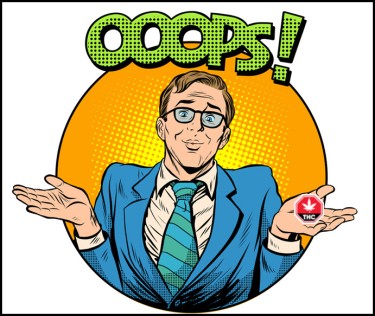
CBD and THC product blends
THC and CBD are the two most important cannabinoids in cannabis products from the consumer’s point of view, but they are very different. They work synergistically in the so-called entourage effect in order to evoke better emotions in the consumer, but have individually different effects. This is the main reason why confusing the percentage or content of both cannabinoids in one product can be very harmful. This was the reality that justified product recalls in Oregon after confusing the CBD and THC levels in various cannabis products. Read on as we look closely at this occurrence and why it is very important to the entire cannabis industry.
A closer look into the mix-up
Cura, a subsidiary of Curaleaf, had its Select branded tincture products recalled by the Oregon Liquor and Cannabis Commission (OLCC) after confusing their THC and CBD line of products. The recall was based on opposing effects that consumers experience after using the brand’s products. The first recall was based on reports from consumers who were euphoric after using CBD products. A subsequent recall was also conducted after consumers using branded THC products did not experience the expected euphoria and high that come with high quality THC products.
The reality was that the brand’s THC tincture contained the Select brand’s CBD formulation. This was the reason for the lack of euphoria among consumers. The same thing happened with the CBD products that contained THC, causing euphoria among consumers who were likely using the product for medicinal reasons or for relaxation.
Curaleaf was quick to address the problem as she was quick to provide the Oregonian with a statement on the matter. They admitted the mix-up and made it clear that preliminary investigations indicate that the error was due to unintentional human error.
Select Tincture 30 Milliliters THC Drops (1000 mg unflavored) is one of the products involved in the September 24 recall. The product is mainly sold by licensed OLCC dealers and tests showed that the product contained no detectable THC, which contradicts what it said on the label. With around 630 units of the product sold between June 29, 2021 and the time of the recall, the recall by the OLCC was inevitable.
Effects of Confusion
Since these products had been in the market for quite a while before the recall, it is certain that various people would certainly have been dissatisfied with these products. However, a customer who was dissatisfied with the product they purchased had to be reported to the OLCC in order to initiate the inquiry and investigation. Jason Crawforth, an Idaho resident, filed a lawsuit against the company after he got high on a THC tincture called CBD.
His reason for purchasing the product was to take care of the pain he was experiencing after recent kidney surgery. CBD is known to be effective for nociceptive and neuropathic pain that can result from such surgical procedures. According to his report, he had tremendous results after using the first bottle. This can be attributed to the researched role of THC in pain relief. However, when using the second bottle, which he associated with a near-death experience, he got an unexpected euphoric feeling.
He sued the company for still being exposed to the consequences of the experience weeks after that experience. These similar experiences were found in 12 other consumers who reported “paranoia” or a “mental fog” that was not to be expected from products labeled THC. The lawsuit filed by Mr Crawforth predated the recall, for which Curaleaf stated in its report that they were grateful that the matter was brought to their attention.
Curaleaf and possible penalties
The first step in correcting this confusion is to recall the products already on the market, but there is more to be done to rewrite the mistakes that have already been made. The next steps will show because it is too early to say whether the company faces sanctions or not. It’s worth noting that the company was originally fined by Oregon for dishonest conduct in the past. The fine was $ 110,000 after the company falsely stated that a number of vape products contained 100% cannabis.
Such mix-ups are not common, especially in an industry as tightly regulated as the cannabis industry. Mark Pettinger, a spokesman for the OLCC’s cannabis program, said that such an event was difficult to trace back to an event in the past. This is because the labeling of cannabis products is a very important aspect in the manufacture of cannabis products. Accurate and accurate labeling is important, as it is important to clearly identify the contents of the product and to carefully indicate the amount of the contents. The purpose is to avoid the experience of mixing CBD and THC in the Cura products.
Time will tell what the fate of Curaleaf is in relation to this particular incident. It is now expected that more cannabis products will step up their regulation and validation exercises to ensure that such errors are completely removed from their production exercise. It is therefore important to ensure that such occurrences serve as a reminder to everyone in the industry of the potential impact of such occurrences.
Bottom line
This experience shows why it is important to validate and regulate cannabis products before they are made available to the public for consumption. Aside from the legal business implications and consumer dissatisfaction, there could be even more damaging effects if consumers who disagree with the use of THC products inadvertently consume them. Hopefully, such errors will no longer be registered in the industry and consumers will have access to the products they actually need.
THC AND CBD BLENDS, READ MORE ..

ORDERED CBD, GET THC, WHAT NOW? WHAT CAN COMPANIES DO?

Post a comment: